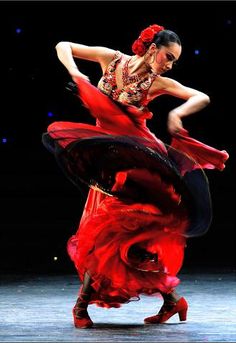by Anitra Pavlico
“Vivi felice (live happily)” —Domenico Scarlatti, in the introduction to his Essercizi per Gravicembalo (Exercises for Harpsichord), 1738
Domenico Scarlatti (1685-1757) refuses to be put into any particular category, despite generations of music historians’ efforts. Scarlatti scholar W. Dean Sutcliffe begins his 2003 book The Keyboard Sonatas of Domenico Scarlatti and Eighteenth-Century Musical Style with the blunt statement, “Domenico Scarlatti does not belong.” Scarlatti was born in Italy, but spent the last thirty years of his life in Spain. He was not quite Baroque, not quite Classical. In his review of the Sutcliffe book, Michael Talbot describes Scarlatti as a “cult figure” who is “neither inside nor outside the canon. He is not seminal in the sense of forming a link in a historical chain either of composers or of performers, but his influence is clearly perceptible in the literature of keyboard instruments from Haydn to Ligeti.” As disparate as their styles might appear, Franz Liszt was an early champion of Scarlatti’s sonatas, and was perhaps the first to perform them publicly. Chopin was also an admirer. Talbot says that Beethoven must have written the second movement of his Op. 54 piano sonata with the ghost of Scarlatti looking over his shoulder.
 Sutcliffe views the concept of “disdain” as central to Scarlatti’s approach: the term, first applied to the composer by Italian musicologist Giorgio Pestelli, connotes a deliberate rejection of convention. Scarlatti is well-versed in, but does not fully adopt, the conventions of the galant musical language in vogue at the time. In short, the galant style was a response to the complexity of the Baroque period and featured simpler melodies, phrasing, and harmonies. Rules are well and good for lesser composers, apparently, but Scarlatti reportedly was of the opinion that his deviations from the rules were “sanctioned by the pleasure that they gave the ear.” Janet Schmalfeldt writes that Scarlatti is “intriguing” in his evasion of stylistic classification, a “smart move” on his part: he was seemingly ahead of his time, given the modern disillusionment with stylistic categories and sharp boundaries between historical periods.
Sutcliffe views the concept of “disdain” as central to Scarlatti’s approach: the term, first applied to the composer by Italian musicologist Giorgio Pestelli, connotes a deliberate rejection of convention. Scarlatti is well-versed in, but does not fully adopt, the conventions of the galant musical language in vogue at the time. In short, the galant style was a response to the complexity of the Baroque period and featured simpler melodies, phrasing, and harmonies. Rules are well and good for lesser composers, apparently, but Scarlatti reportedly was of the opinion that his deviations from the rules were “sanctioned by the pleasure that they gave the ear.” Janet Schmalfeldt writes that Scarlatti is “intriguing” in his evasion of stylistic classification, a “smart move” on his part: he was seemingly ahead of his time, given the modern disillusionment with stylistic categories and sharp boundaries between historical periods.
Scarlatti composed 555 harpsichord sonatas for his young student Princess Maria Barbara, who eventually became Queen of Spain. He left only a few manuscript collections of sonatas by the time he died in Madrid. They remained almost unknown to the musical world until Carl Czerny, in 1839, published 200 of them in an edition in Vienna (which compels me to forgive Czerny for his piano exercise series). Italian composer and musicologist Alessandro Longo published a relatively complete edition (11 volumes) in 1906-08, and later added a supplement of 45 sonatas. American harpsichordist Ralph Kirkpatrick wrote the definitive book on Scarlatti and renumbered the sonatas to a possible (and at times controversial) chronological order. Kirkpatrick published the 555 sonatas in his book Domenico Scarlatti in 1953.
Not only is it difficult to classify Scarlatti, but it is difficult to know anything about him at all. Only one of his letters survives. Schmalfeldt, in her article “Domenico Scarlatti, Escape Artist: Sightings of his ‘Mixed Style’ towards the End of the Eighteenth Century,” writes that although we do not know if he meant to “escape” so completely from the attention of historians and biographers, it does appear that, quoting musicologist Malcolm Boyd, Scarlatti must have “employed a cover-up agent to remove all traces of his career from the gaze of posterity.” The main commentary we have from Scarlatti about his sonatas is written into the works themselves.
In the introductory notes to his 1994 edition of Scarlatti sonatas, Maurice Hinson points out that the study of Spanish folk music and dance is very helpful to understanding Domenico Scarlatti’s music. Twentieth-century Spanish composer Manuel de Falla considers Scarlatti the classic Spanish composer. In a recent episode of New York classical station WQXR’s “Reflections from the Keyboard” that featured Spanish music, I heard a few Scarlatti sonatas. I admit they sounded a little out of place to me among the Spanish-born composers, perhaps illustrating Scarlatti’s “disdain” for following any convention in lockstep, but the Spanish influence is beyond question. Hinson writes that the guitar must have inspired Scarlatti’s “gentle arpeggio strumming effects, internal pedal points, and percussive acciaccaturas [grace notes played quickly, before the essential note of a melody].” There is nothing to suggest that Scarlatti played the guitar, but he was evidently taken with the instrument’s style, grace, and sonority. Kirkpatrick has written that Scarlatti “has captured the click of castanets, the strumming of guitars, the thud of muffled drums, the harsh bitter wail of gypsy lament, the overwhelming gaiety of the village band, and above all the wiry tension of the Spanish dance.”

To illustrate how Scarlatti both fits into, and evades, existing categories of Spanish music, here are a few juxtapositions. This is a Scarlatti sonata that Hinson says draws on the tradition of the Spanish bulerias dance–an example of music for which can be found here (listen for the section starting at 1:16 in Scarlatti). The second pairing features a sonata that Hinson says incorporates elements of the Spanish jota. You can hear the similarities if you squint your ears, but Scarlatti has hardly adopted anything unequivocally.
It may be hard to classify him stylistically, or to uncover details about his life, but it is somewhat easier to say why I love Scarlatti’s music: the word that always comes to mind is grace. Some others: elegance, lightness. Also, seemingly at odds with those concepts: melancholy. There is nothing more full of pathos than a Scarlatti sonata in a minor key when you’re in a certain mood. This one is one of my favorites. Hinson writes that the sonatas’ “gaiety is made all the more intense by an undertone of tragedy.”
In his notes on how to play Scarlatti’s sonatas, Hinson writes that they present physical challenges. The pianist has to train the hands to move rapidly on the keyboard and the fingers to “dance nimbly ‘on the spot’ (for fast repeated notes).” This sonata in A minor features a nimble dance between the hands as the left hand crosses up and over the right to play the melody (this happens for the first time at 0:19). Playing it is almost like holding up a piece of paper to a mirror and writing something in your non-dominant hand. It is frustrating and at the same time quite fun. This happens time and again in Scarlatti sonatas – graceful dances around the keyboard as each hand ventures into strange territory and then leaps back on to familiar ground.
Another two sonatas that I love are in E major (K. 380) and A major (K. 208). The opening of K. 380 reminds me of birdsong. It progresses into a very smart and regal march, albeit in 3/4 time. The ending features a blend of these two moods with the right hand playing its elegant single-note melody in the higher register and the single bass note providing a stately sense of gravity. The A major sonata, meanwhile, is simply lovely. In Talbot’s review of Sutcliffe, he points out that Sutcliffe described a different sonata (K. 308) with a “spare texture” in these terms, but his words could apply just as equally to the K. 208 sonata: “It is the space between and around the texture that is so expressive, indeed seductive.” When you find yourself in a world that’s a little too noisy, listen to the space contained in this sonata and your consciousness instantly rises to the stratosphere. Maybe that is where Domenico Scarlatti belongs.
__
Sources
Michael Talbot, “Review: The Keyboard Sonatas of Domenico Scarlatti and Eighteenth-Century Musical Style by W. Dean Sutcliffe,” Echo, Vol. 15.1 (2019)
Janet Schmalfeldt, “Domenico Scarlatti, Escape Artist: Sightings of his ‘Mixed Style’ towards the End of the Eighteenth Century,” Music Analysis, 38/iii (2019), available here
Scarlatti Sonatas for the Keyboard, Vol. 1 (2nd edition), edited by Maurice Hinson (California: Alfred Publishing Co., Inc., 1994)
